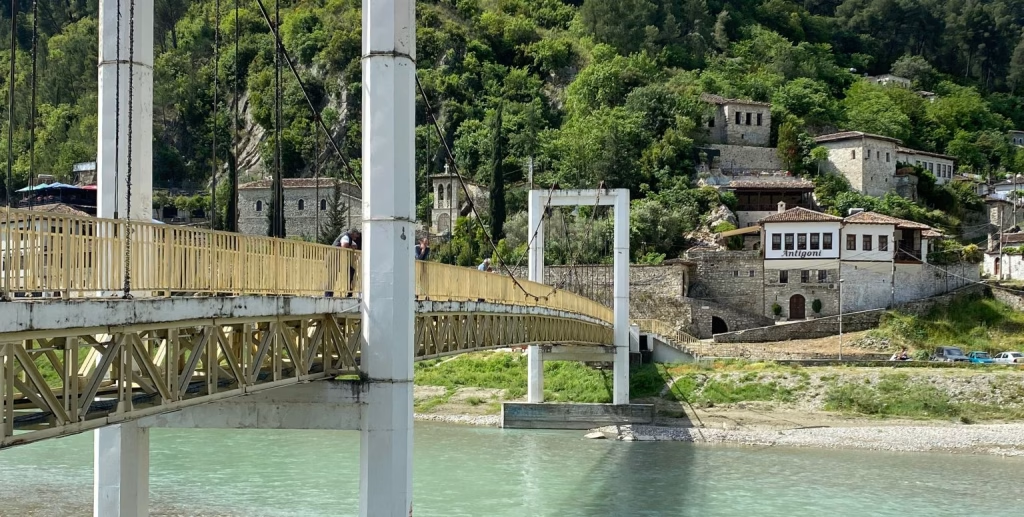In today’s world—interconnected and subject to rapid climatic, technological, and social transformations—addressing the complexity of territorial systems requires increasingly sophisticated approaches. From 8 to 11 June 2025, Tirana will host the 20th Annual System of Systems Engineering Conference (SoSE), a key international event for researchers, engineers, decision-makers, and organizations working in highly complex contexts. A unique opportunity to discuss how autonomous, distributed, and interdependent systems interact with one another—and how they can be designed to address crucial challenges for humanity: from emergency management to sustainability, from technological innovation to international cooperation.
CIMA Research Foundation takes part in this edition not only as a “main sponsor”, but also with a keynote that explores the transformative potential of Early Warning Systems in flood risk reduction. A significant presence, further consolidated by the constant cooperation of our operational branch in Albania, committed to strengthening local risk response capacities and building a culture of prevention.
Innovation and prevention: let’s talk about Flood Risk Management
“Building alert systems means creating intelligent networks: of data, of technologies, but above all, of people.” With these words, Miranda Deda, Director of the Albanian branch of CIMA Research Foundation, introduces the Foundation’s contribution to the conference. Early Warning Systems (EWS) represent one of the most advanced and complex tools in the field of hydrogeological risk management, as they are based on architectures that integrate sensor networks, predictive modelling, decision-making protocols, and the participation of local actors. Their functioning as systems of systems implies the continuous convergence of heterogeneous data and operational functions, which requires strong interoperability between technologies, institutions, and communities.
Crucial in this context is the multi-hazard approach, which makes it possible to overcome a sectoral vision and address the interactions between different natural hazards. Particular attention is given to high-frequency, low-impact events, often overlooked by traditional models but decisive in defining the progressive accumulation of vulnerability over time.
This is the context of the FLORIS – Innovative Tools for Improving Flood Risk Reduction Strategies project, presented as an emblematic case study of the integration between scientific approach and operational application, active since 2019. The project developed scientifically robust decision-support tools for the comparative assessment of flood risk reduction strategies, contributing to a more articulated understanding of the trade-offs between structural and non-structural measures.
FLORIS introduced dynamic scenarios based on advanced hydrological modelling and multilevel quantitative indicators, designed to provide informed support to a variety of decision-makers: from Functional Centres to local authorities. Its methodology promotes a systemic approach to planning and emergency management, with particular attention to the cumulative effects of frequent low-impact events.
These contents were at the core of the keynote titled Innovative Early Warning Systems and Flood Risk Management: Advancing Prevention and Preparedness in a Changing Climate, presented by Miranda Deda and Marina Morando, Programme Director at CIMA Research Foundation: “It is not enough to have data or advanced technological tools—we need the ability to turn them into effective decisions for the most exposed territories and communities. That is where the difference lies between a ‘smart’ system and a merely ‘connected’ one.”


A strategic conference for the future of systemic resilience
With a programme that includes over 100 international contributions, thematic workshops, and roundtables, the 20th SoSE Conference is a crucial platform for sharing experiences on the design, modelling, and governance of System of Systems (SoS): sets of interdependent systems capable of interacting to achieve common objectives, while maintaining functional and operational autonomy.
The 2025 edition focuses in particular on the role of SoS in supporting strategic decisions in highly interconnected sectors, such as climate change management, critical infrastructure, energy transition, and environmental emergencies. What emerges is the urgency of developing methods and tools that allow heterogeneous systems—environmental, technological, institutional—to collaborate in uncertain and evolving scenarios.
The discussions address, among other topics, systemic resilience, multilevel governance, platform interoperability, and decision-support systems, outlining a framework consistent with the most advanced areas of work in risk reduction, adaptive planning, and integrated crisis response.
Among the topics discussed, the importance of predictive technologies applied to the modelling of wildfire behaviour also emerges—an increasingly relevant area in the context of the growing frequency and intensity of extreme events.
A rooted presence in the territory: CIMA Research Foundation’s branch in Albania
An integral part of this strategy is the permanent presence of CIMA Research Foundation in Albania, formally established in 2011 and now fully operational. Located in the heart of the Balkans—a region particularly exposed to hydro-meteorological risks—the Foundation’s Albanian branch represents a strategic hub for promoting local resilience and transferring scientific and operational expertise.
“Working in Albania and in the region means being immersed in a real context where vulnerability translates every day into concrete challenges for communities,” says Deda. “That’s why our approach is based on collaboration, listening, and co-design with local authorities and civil protection structures.”
Through this presence, CIMA Research Foundation has supported training projects, capacity-building activities, and the adoption of innovative tools for natural hazard monitoring and forecasting for more than 15 years in the region. A tangible sign of science’s willingness to act directly in the most exposed territories, strengthening local capacities and contributing to more effective, inclusive, and sustainable civil protection systems.
The 20th Annual SoSE Conference thus represents a valuable opportunity to collectively reflect on how to build protection, forecasting, and response systems that are truly interconnected, adaptive, and oriented toward collaboration. In a world subject to rapid and unpredictable transformations, the most effective solutions are those that emerge from the exchange among disciplines, territories, and different forms of knowledge.
It is in the ability to build synergies—between technology, governance, culture, and human relationships—that the transformative potential of complex systems resides. A cooperative and systemic approach that can make the difference in addressing crises and generating lasting resilience.


Special session dedicated to Forest Fire Risk Mapping beyond borders, with guidelines from the IPA Floods and Fires programme.
